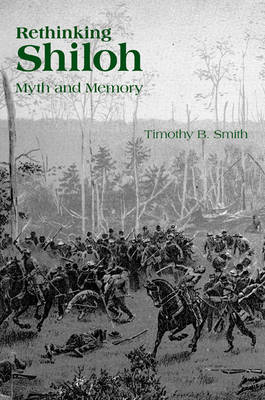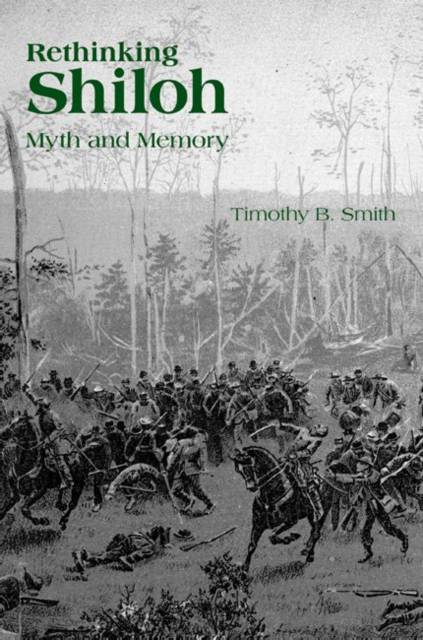
- Afhalen na 1 uur in een winkel met voorraad
- Gratis thuislevering in België vanaf € 30
- Ruim aanbod met 7 miljoen producten
- Afhalen na 1 uur in een winkel met voorraad
- Gratis thuislevering in België vanaf € 30
- Ruim aanbod met 7 miljoen producten
Zoeken
Omschrijving
Ulysses S. Grant once remarked that the Battle of Shiloh "has been perhaps
less understood, or, to state the case more accurately, more persistently
misunderstood, than any other engagement . . . during the entire rebellion."
In Rethinking Shiloh, Timothy B. Smith seeks to rectify these persistent
myths and misunderstandings, arguing that some of Shiloh's story is either
not fully examined or has been the result of a limited and narrow collective
memory established decades ago. Continuing the work he began in The
Untold Story of Shiloh, Smith delves even further into the story of Shiloh
and examines in detail how the battle has been treated in historiography and
public opinion.
The nine essays in this collection uncover new details about the
battle, correct some of the myths surrounding it, and reveal new avenues of
exploration. The topics range from a compelling analysis and description of
the last hours of General Albert Sidney Johnston to the effect of the New
Deal on Shiloh National Military Park and, subsequently, our understanding
of the battle. Smith's careful analyses and research bring attention to
the many relatively unexplored parts of Shiloh such as the terrain, the
actual route of Lew Wallace's march, and post-battle developments that
affect currently held perceptions of thatfamed clash between Union and
Confederate armies in West Tennessee.
Studying Shiloh should alert readers and historians to the likelihood
of misconceptions in other campaigns and wars--including today's military
conflicts. By reevaluating aspects of the Battle of Shiloh often ignored by
military historians, Smith's book makes significant steps toward a more
complete understanding and appreciation of the Shiloh campaign in all of its
ramifications.
less understood, or, to state the case more accurately, more persistently
misunderstood, than any other engagement . . . during the entire rebellion."
In Rethinking Shiloh, Timothy B. Smith seeks to rectify these persistent
myths and misunderstandings, arguing that some of Shiloh's story is either
not fully examined or has been the result of a limited and narrow collective
memory established decades ago. Continuing the work he began in The
Untold Story of Shiloh, Smith delves even further into the story of Shiloh
and examines in detail how the battle has been treated in historiography and
public opinion.
The nine essays in this collection uncover new details about the
battle, correct some of the myths surrounding it, and reveal new avenues of
exploration. The topics range from a compelling analysis and description of
the last hours of General Albert Sidney Johnston to the effect of the New
Deal on Shiloh National Military Park and, subsequently, our understanding
of the battle. Smith's careful analyses and research bring attention to
the many relatively unexplored parts of Shiloh such as the terrain, the
actual route of Lew Wallace's march, and post-battle developments that
affect currently held perceptions of thatfamed clash between Union and
Confederate armies in West Tennessee.
Studying Shiloh should alert readers and historians to the likelihood
of misconceptions in other campaigns and wars--including today's military
conflicts. By reevaluating aspects of the Battle of Shiloh often ignored by
military historians, Smith's book makes significant steps toward a more
complete understanding and appreciation of the Shiloh campaign in all of its
ramifications.
Specificaties
Betrokkenen
- Auteur(s):
- Uitgeverij:
Inhoud
- Aantal bladzijden:
- 216
- Taal:
- Engels
Eigenschappen
- Productcode (EAN):
- 9781572339415
- Verschijningsdatum:
- 1/05/2013
- Uitvoering:
- Hardcover
- Formaat:
- Genaaid
- Afmetingen:
- 157 mm x 234 mm
- Gewicht:
- 430 g

Alleen bij Standaard Boekhandel
+ 118 punten op je klantenkaart van Standaard Boekhandel
Beoordelingen
We publiceren alleen reviews die voldoen aan de voorwaarden voor reviews. Bekijk onze voorwaarden voor reviews.











